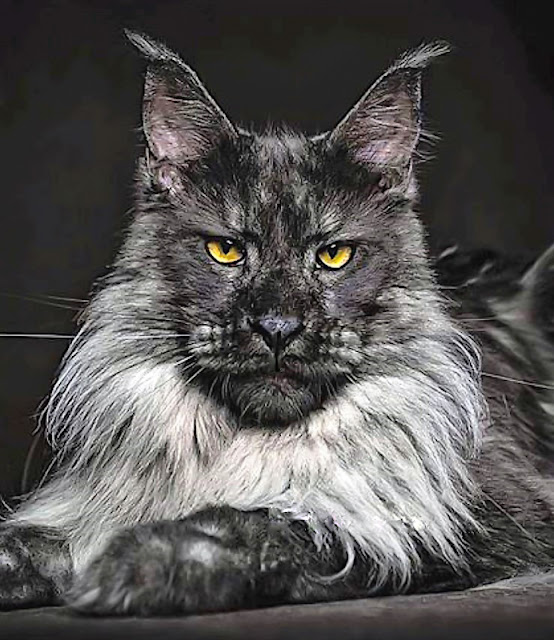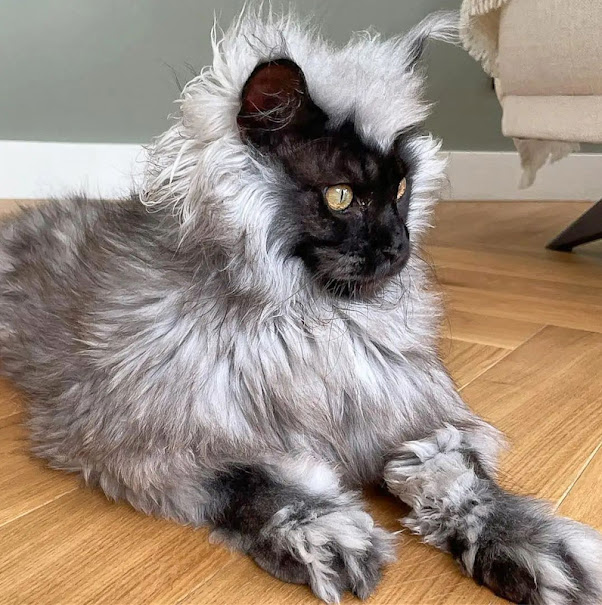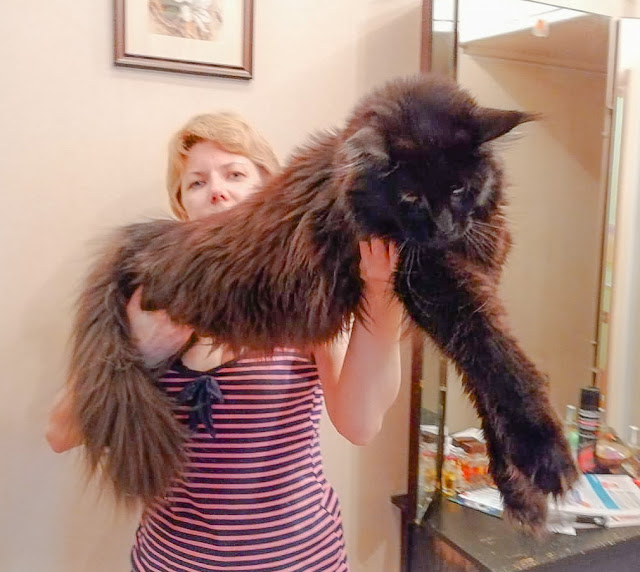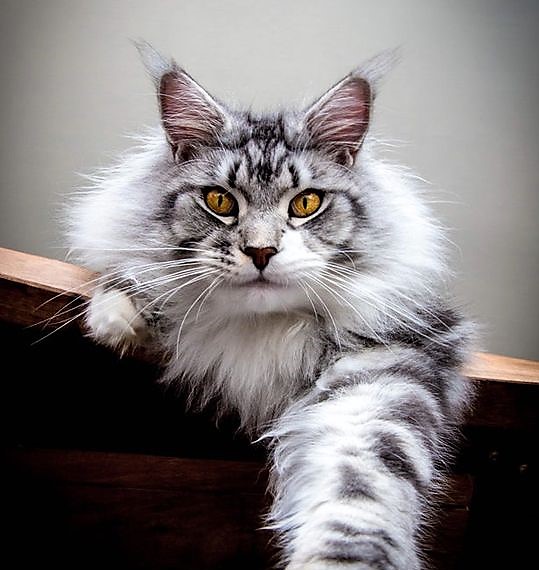Checking your Maine Coons cat's gums at the rear of the mouth when they are conscious
Perhaps like almost everybody else, I struggle with checking my cat's gums at the rear of his mouth. In fact, I've never actually done it specifically to check that area. I have noticed the health of his mouth in general terms because I can see inside his mouth from time to time particularly when he yawns but that's a cursory glance and it's not that accurate.
 |
| Checking a cat's gums at the back. Image: The Veterinary Nurse. |
Link to The Veterinary Nurse website. How to perform a conscious all examination of a cat and what to look for. What they mean is that the cat is conscious and not under a general anaesthetic.
We know that domestic cats including Maine Coon cats will eventually have oral health problems. Calculus and plaque builds up on the borderline between gums and teeth. This is a mixture of food waste and bacteria and it causes gum inflammation which is also called gingivitis. And gum disease is called periodontal disease.
How do we, as cat owners, get to check the back of our cat's mouth especially the top and bottom at the back; right at the back because that is where gum disease is going to occur.
If every cat owner checked their cat's gums, both upper and lower at the back on both sides, weekly or at least monthly, there would be a lot less severe periodontal disease in domestic cats. This is a major health problem in domestic cats. There is no doubt in my mind that it is in the top 10 feline health problems because nobody can check their cat's mouth and nobody cleans the cat's teeth! Well, some do but they are going to be a tiny percentage of the sum total of cat owners.
I went in search of some answers as to how to do this routine task to see whether I could actually change my habits. And I'm going to refer to a veterinary nurse website (see link above) which tells veterinary nurses how to check a patient's oral health.
And having read through their advice, I can see that they have three advantages over your typical Maine Coon cat owner or any owner of any cat. They are as follows.
The veterinary clinic
At the veterinary clinic, a cat is going to be anxious or simply fearful. They will tend to be more passive and more submissive because of their fear and because there's nowhere to hide. On occasions they may become aggressive in defending themselves but the general reaction is passivity caused by anxiety. This makes them more predisposed towards having their mouth checked. At home, we, as cat owners can't really reproduce that but there are two other things that we can do which may work.
Two people
If you can get a friend who knows your cat and with whom your cat is relaxed, to restrain your cat in a gentle but firm way while you examine his or her teeth that would certainly help. But it has to be a person that your cat knows otherwise that person will simply make the cat more anxious and they will struggle and almost certainly succeed in getting away. I can foresee a chaotic situation developing.
Towels and pheromones
This I think is a useful tip. Some cats will respond and feel more relaxed if a towel has been pre-sprayed with a pheromone and that towel is placed on the table. Another towel could be placed over the cat to help to restrain the cat and to avoid scratches. That towel, as well, could be sprayed with pheromone. I'm referring to the well-known pheromone spray called Feliway. That would be a decent choice. This pheromone will help to calm the cat.
The cat's owner
I guess ideally, they should wear those plastic gloves designed to be worn by veterinarians and veterinary nurses. And the instructions are to "place one hand on the cat's head and using the thumb and forefinger left the lips ventrally to show the maxilla, and with the other hand, place the forefinger on the mandibular incisor area and gently pull the lower jaw ventrally while tilting the head back". The picture on this page comes from the veterinary nurse website.
To interpret that as it contains some technical terms, the word "ventrally" means the underside. The word "maxilla" means the jawbone specifically the upper jaw. The "mandibular incisor area" describes the front teeth of the lower jaw. Despite that verbal description you're probably better off looking at the picture!
That's pretty much all I have on this topic at this stage. It does contain one or two tips which may help. I think people including me should try and when my friend is well again, I'm going to see whether we can do it because my cat knows my friend.
We owe it to our cats to check the health of their gums because if we don't, they are more likely to end up in a veterinary clinic with severe oral health issues and for a teeth cleaning session which requires a general anaesthetic which in turn carries health risks for the cat.
The next stage will be this: if there are problems with the gums, you're going to have to figure out how you going to clean the teeth along the gum line! That is a whole different kettle of fish and even more difficult.










Comments
Post a Comment
Please share your Maine Coon experiences.